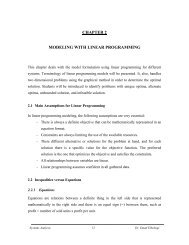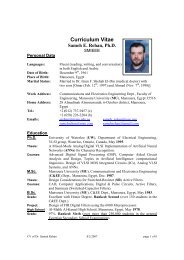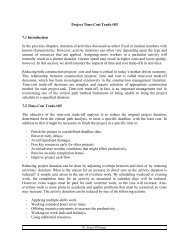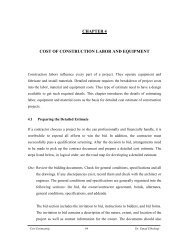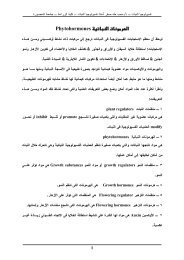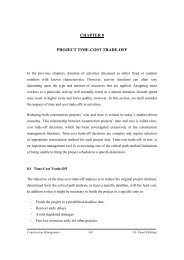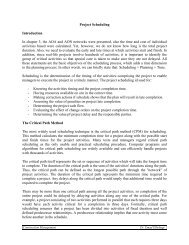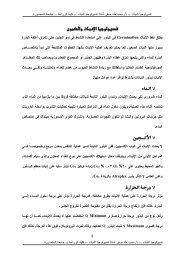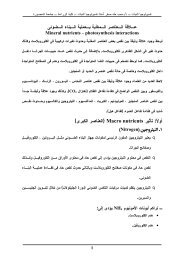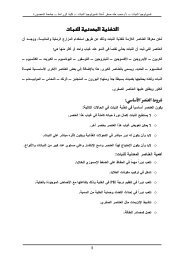Thyroid and Parathyroid
Thyroid and Parathyroid
Thyroid and Parathyroid
You also want an ePaper? Increase the reach of your titles
YUMPU automatically turns print PDFs into web optimized ePapers that Google loves.
ophthalmoplegia; (3) exophthalmos with proptosis; (4) supraorbital <strong>and</strong> infraorbital<br />
swelling; <strong>and</strong> (5) congestion <strong>and</strong> edema of the conjunctiva (chemosis) (Fig. 36-14).<br />
The exophthalmos is a result of increased retro-orbital tissue <strong>and</strong> can be assessed<br />
objectively with an exophthalmometer (Hertel), which measures the distance from the<br />
lateral bony orbital margin to the anterior surface of the cornea. Protrusion may lead<br />
to ophthalmoplegia, an inability to move the eyeball (upper rotation being most<br />
commonly restricted), leading to diplopia. If proptosis is progressive, optic nerve<br />
damage <strong>and</strong> blindness may occur, usually preceded by decreasing visual acuity <strong>and</strong><br />
increasingly impaired color vision. This condition is commonly referred to as<br />
malignant exophthalmos. An urgent ophthalmic opinion should be sought. Marked<br />
protrusion can result in chemosis, in which the sclera <strong>and</strong> conjunctiva become<br />
. inflamed, with itching, lacrimation, photophobia, <strong>and</strong>, eventually, ulceration<br />
The pathogenesis of ophthalmopathy is controversial; the cross-reaction of the thyroid<br />
antigen <strong>and</strong> ocular muscle antibodies is a possible explanation. Continued<br />
hyperthyroidism <strong>and</strong> hypothyroidism aggravate exophthalmos <strong>and</strong> should be avoided.<br />
Histologically, a diffuse lymphocytic infiltration of the retro-orbital tissues occurs,<br />
followed by fibroblast activation with glycosaminoglycan (a mucopolysaccharide)<br />
. production leading to edema <strong>and</strong> fibrosis<br />
Diagnostic Findings in Graves' Disease<br />
Thyrotoxicosis is characterized by an autonomous thyroid function <strong>and</strong> decreased or<br />
undetectable level of TSH in association with elevated concentrations of circulating<br />
T3 <strong>and</strong>/or T4. Raised levels of circulating thyroid autoantibodies are usually detected<br />
in the serum. A radioactive thyroid scan with 123I is characterized by diffuse uptake<br />
.( throughout the gl<strong>and</strong>. An uptake of 45 to 90 percent is usually observed (Fig. 36-15<br />
Treatment of Graves' Disease<br />
Three treatment modalities are available for patients with Graves' disease: medical<br />
management in the form of antithyroid drugs, thyroid ablation with radioactive 131I,<br />
<strong>and</strong> subtotal or total thyroidectomy. The treatment chosen depends on the age of the<br />
patient, the severity of the disease, the size of the gl<strong>and</strong>, any coexistent pathology,<br />
including associated ophthalmopathy, <strong>and</strong> other factors such as patient's preferences<br />
. <strong>and</strong> pregnancy<br />
Antithyroid Drugs<br />
The hyperdynamic peripheral adrenergic effects of thyrotoxicosis can be alleviated by<br />
administering beta-blocking agents. These drugs have the added effect of decreasing<br />
the peripheral conversion of T4 to T3. Propranolol is the most commonly prescribed<br />
medication. It reduces the heart rate, controls tremor, <strong>and</strong> to some extent relieves the<br />
agitation that these patients have. Beta blockers have no apparent effect on the overall<br />
. remission rate of thyrotoxicosis<br />
The main antithyroid drugs are propylthiouracil (PTU) <strong>and</strong> methimazole (Tapazole) in<br />
the United States <strong>and</strong> carbimazole (in the United Kingdom). These drugs act by<br />
inhibiting the organic binding of thyroidal iodine <strong>and</strong> also inhibit the coupling of<br />
iodotyrosines. Propylthiouracil also influences the extrathyroidal conversion of T4 to<br />
T3. These medications have no effect on the underlying cause of the disease, although<br />
.<br />
there is evidence that propylthiouracil decreases thyroid autoantibody levels



